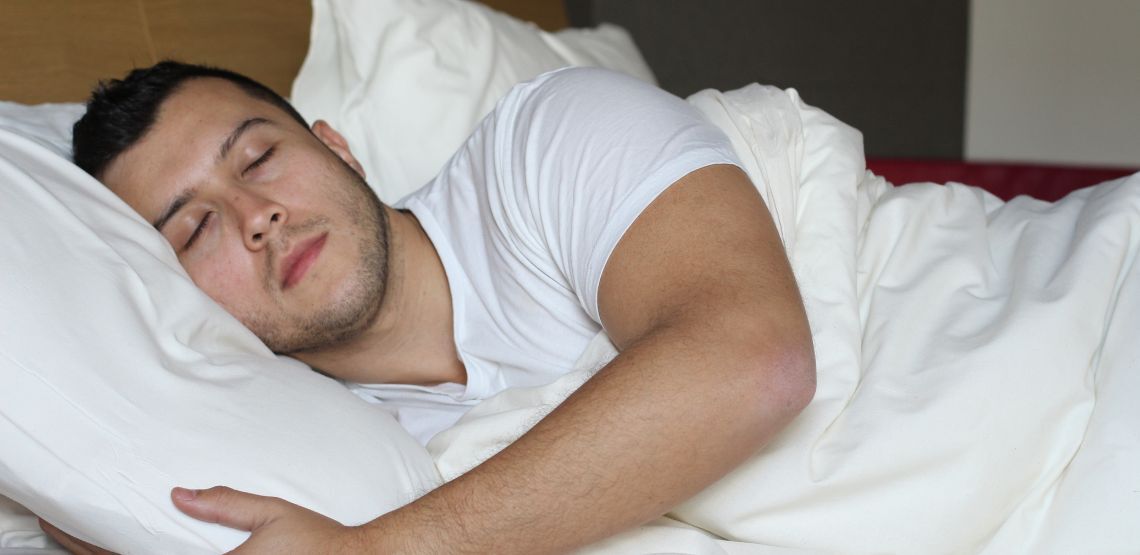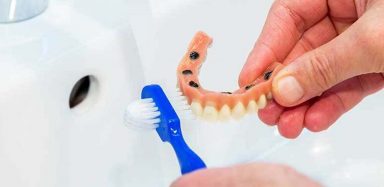Sleeping Positions for Sleep Apnea
Sleep apnea causes breathing issues when sleeping, so managing these symptoms is important. Pillows (and pillowcases like Cariloha vs Silvon), mattresses and sheets can help with sleep apnea by providing proper support and alignment for the head, neck and spine, reducing the likelihood of airway obstruction during sleep.
If untreated, people with sleep apnea will experience poor-quality, broken sleep. This can lead to excessive tiredness the following day and contribute to the development of several chronic diseases. It can also be disruptive for partners who might lose sleep due to noisy breathing.
Therefore, finding an effective way to improve sleep apnea is essential. The most common treatment is sleeping with a continuous positive airway pressure (CPAP) machine to keep the airway open during sleep. However, many patients find it challenging to adhere to this treatment. As many as two-thirds do not use their CPAP machine routinely.
Another way to manage sleep apnea is by adapting one’s sleeping position to encourage the airway to stay open at night. So, what are the best sleeping positions for sleep apnea? Let’s take a look.
What Are the Best Sleeping Positions for Sleep Apnea?
Since gravity is responsible for narrowing the airway in obstructive sleep apnea, the best sleep positions are those that counter its effects. Therefore, the least beneficial sleep apnea sleeping position is on the back, where gravity has full control. Here are some better alternatives:
1. Side Sleeping (Left Side)
Sleeping on the left side is considered one of the best sleeping positions in general. It may be especially beneficial for people with sleep apnea as it fights against gravity to keep the airway open during sleep.
This position is also considered beneficial for people with digestive issues, such as heartburn and gastroesophageal reflux disease (GERD). Both of these conditions frequently occur alongside sleep apnea. Since the stomach is on the left side of the body, sleeping on the left side can help reduce acid reflux.
Left-side sleeping can also help promote blood flow. However, people with congestive heart failure should consult a physician before sleeping in this position. It can cause the heart to work harder than normal and may cause discomfort.
Another potential issue with side sleeping is that it places unnecessary strain on the spine. This can be mitigated by:
- Investing in a good, firm pillow,
- Sleeping with the legs straight rather than bent, or
- Placing a pillow between the knees for comfort.
Related Search Topics (Ads)
2. Side Sleeping (Right Side)
The next best sleeping position for sleep apnea is sleeping on the right side. It has many of the same benefits as sleeping on the left side because it prevents the airways from collapsing and reduces breathing resistance.
However, sleeping on the right side is considered slightly less beneficial than sleeping on the left because it can increase the risk of heartburn and GERD. These conditions can worsen sleep apnea symptoms and lead to further sleep disturbances.
As with sleeping on the left side, people sleeping on their right side should ensure their back is well supported to keep them comfortable through the night.
3. Sleeping on the Front
Sleeping on the front is not the best sleep position for sleep apnea, but it is still preferable to sleeping on the back. It opposes gravity and pulls the tongue forward to open the airway and facilitate easier breathing.
The downside is that this sleep position can cause people to bury their faces in the pillow, negatively impacting breathing. It can also place additional strain on the neck and contribute to cosmetic concerns like wrinkles and pimples.
Coyuchi Organic Pillowcase vs. Blissy Silk Pillowcase
Coyuchi organic pillowcase and Blissy silk pillowcase are both popular choices among those who prioritize quality and comfort for their bedding needs. The Coyuchi organic pillowcase is made from 100% organic cotton, which makes it soft and breathable, while also being hypoallergenic and gentle on the skin. On the other hand, the Blissy silk pillowcase is made from high-quality 22-momme Mulberry silk, which is known for its luxurious feel and its ability to prevent hair breakage and minimize wrinkles.
While both pillowcases offer unique benefits, the Coyuchi organic pillowcase is a more affordable option and is ideal for those with sensitive skin, while the Blissy silk pillowcase is a more luxurious option that is great for hair and skin health. Ultimately, the choice between these two pillowcases will depend on individual preferences and needs.
Cariloha Bamboo vs. Silvon Organic Pillowcases
Cariloha bamboo pillowcases and Silvon organic pillowcases are two popular options for people who want comfortable and eco-friendly bedding. Cariloha bamboo pillowcases are made from bamboo viscose, which is naturally soft, breathable, and hypoallergenic. In contrast, Silvon organic pillowcases are crafted from a blend of organic cotton and silver-infused fibers that have antimicrobial properties to keep the pillowcase fresh and odor-free.
The two pillowcases also differ in terms of style and design. Cariloha bamboo pillowcases come in a wide range of colors and patterns, with a silky smooth texture that improves with each wash. Silvon organic pillowcases, on the other hand, have a simple and classic design, and are only available in white or grey.
Best Sleeping Position for Sleep Apnea: Summary
Most experts consider sleeping on the left side to be the best position for sleep apnea. It helps to keep the airways open and reduces the risk of heartburn and GERD. However, this sleep position may not be comfortable or practical for everyone.
Ultimately, the best sleeping position for sleep apnea is your most comfortable position, allowing you to get the best quality sleep. While many people find side sleeping best for sleep apnea, it may be uncomfortable for those with back problems or congestive heart failure. For these individuals, sleeping on the front or back may be better.
Side and front sleeping could also interfere with using a CPAP machine, and investing in a special CPAP pillow may be necessary. Although sleeping on the back is not ideal for sleep apnea, it does allow a CPAP machine to be used freely. Those who wish to continue sleeping on their back should consider a slightly raised pillow position for sleep apnea relief.
Article Resources
- NIH (Sleep positions and nocturnal body movements based on free-living accelerometer recordings: association with demographics, lifestyle, and insomnia symptoms)
- NIH (Positional therapy for obstructive sleep apnoea)
- cpap.com (Best Sleeping Position for Sleep Apnea)
- John Hopkins Medicine (Choosing the Best Sleep Position)
- Sleep Cycle (Optimal sleep positions for sleep apnea)

